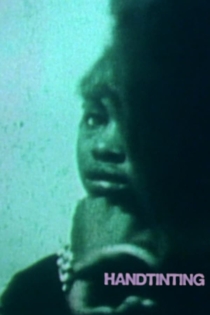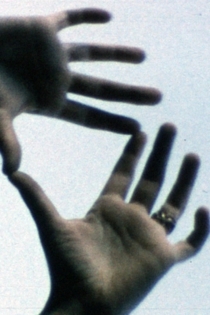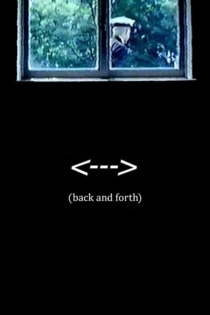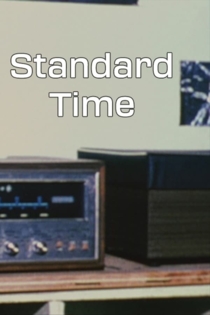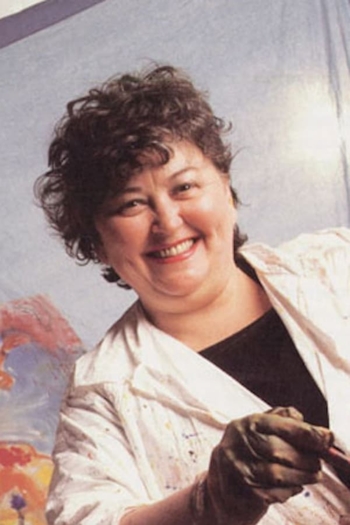
Joyce Wieland
1930 - 1998In 1963 Wieland and Snow moved to New York where they lived for ten years. She attracted critical recognition of her work but eventually moved back to Toronto. Wieland later divorced Snow and kept a low profile until her death in 1998 from Alzheimer's disease. She was made an Officer of the Order of Canada in 1982.
The Mammal Palace
George Kuchar
Suzette Harris, Zelda Keiser
The movie takes a rather negative look at things despite the fact that it was shot in reversal film. It depicts the turbulent relationships of disturbed individuals existing on various levels of an apartment house. Donna Kerness and her husband Hopeton Morris are lurid together and they are also pretty lurid when they're alone.
The Mammal Palace

Knocturne
George Kuchar
Iris Holtzman, Joyce Wieland
The rising moon is the main theme in this short movie of three people and an animal going about their nocturnal rituals. This movie is evidently part three of my trilogy that started with HOLD ME WHILE I'M NAKED and ECLIPSE OF THE SUN VIRGIN. It evidently is, since part three never really came out. This seems to look like it could be part three. — GK (anthologyfilmarchives.org)
Knocturne

Birds at Sunrise
Joyce Wieland
"The film [Birds at Sunrise] was originally photographed in 1972. Birds from my window were filmed during the winter, through to the spring, with the early morning light. I became caught up in their frozen world and their ability to survive the bitter cold. I welcomed their chirps and their songs which offered life and hope for spring. In 1984 I was part of a cultural exchange between Canada and Israel. During my visit my unfinished movie came to mind. A connection was established in my mind -- so that the suffering of the birds became, in a sense, symbolic of the Jews and their survival through suffering. [...]" -- Joyce Wieland
Birds at Sunrise

A and B in Ontario
Hollis Frampton, Joyce Wieland
Hollis Frampton, Joyce Wieland
Joyce Wieland: “Hollis and I came back to Toronto on holiday in the summer of '67. We were staying at a friend's house. We worked our way through the city and eventually made it to the island. We followed each other around. We enjoyed ourselves. We said we were going to make a film about each other - and we did”. A & B in Ontario was completed eighteen years after the original material was shot. After Frampton's death, the film was assembled by Wieland into a cinematic dialogue in which the collaborators shoot each other with cameras.
A and B in Ontario

‘Rameau’s Nephew’ by Diderot (Thanx to Dennis Young) by Wilma Schoen
Michael Snow
Kevin Wenzel, Munro Ferguson
Described (rather cheekily) by director Michael Snow as a musical comedy, this deft probing of sound/image relationships is one of his wittiest, most entertaining and philosophically stimulating films. In his words, the film “derives its form and the nature of its possible effects from its being built from the inside, as it were, with the actual units of such a film, i.e. the frame and the recorded syllable. Thus its ‘dramatic’ element derives not only from a representation of what may involve us generally in life but from considerations of the nature of recorded speech in relation to moving light-images of people.’”
‘Rameau’s Nephew’ by Diderot (Thanx to Dennis Young) by Wilma Schoen
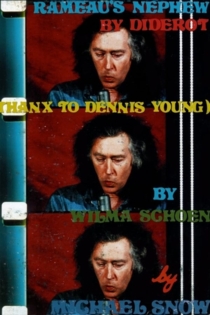
Zorns Lemma
Hollis Frampton
Robert Huot, Rosemarie Castoro
Zorns Lemma is a 1970 American structuralist film by Hollis Frampton. It is named after Zorn's lemma (also known as the Kuratowski–Zorn lemma), a proposition of set theory formulated by mathematician Max Zorn in 1935. Zorns Lemma is prefaced with a reading from an early grammar textbook. The remainder of the film, largely silent, shows the viewer an evolving 24-part "alphabet" (where i & j and u & v are interchanged) which is cycled through, replaced and expanded upon. The film's conclusion shows a man, woman and dog walking through snow as several voices read passages from On Light, or the Ingression of Forms by Robert Grosseteste.
Zorns Lemma
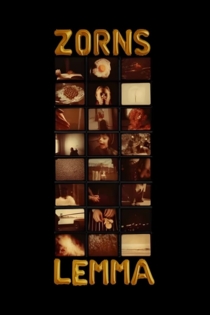
La raison avant la passion
Joyce Wieland
Pierre Elliott Trudeau
The film consists primarily of degraded footage of landscapes shot from vehicles moving across the country; meanwhile, 537 computer-generated permutations of the film’s title appear like subtitles—the letters are scrambled over and over again, undermining the meaning of Pierre Trudeau's infamous motto.
Reason Over Passion
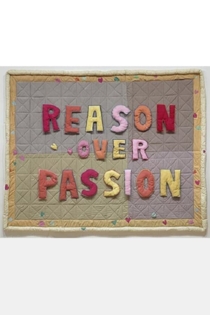
Handtinting
Joyce Wieland
Handtinting, a five-minute silent study of young girls dancing, swimming, and observing one another by Joyce Wieland, […] has a quality that is reminiscent of cognitive dilemmas in some of her other films but that has few counterparts in avant-garde cinema of the sixties.
Handtinting
